实例介绍
【实例简介】MISRA--工业标准的C编程规范
【实例截图】
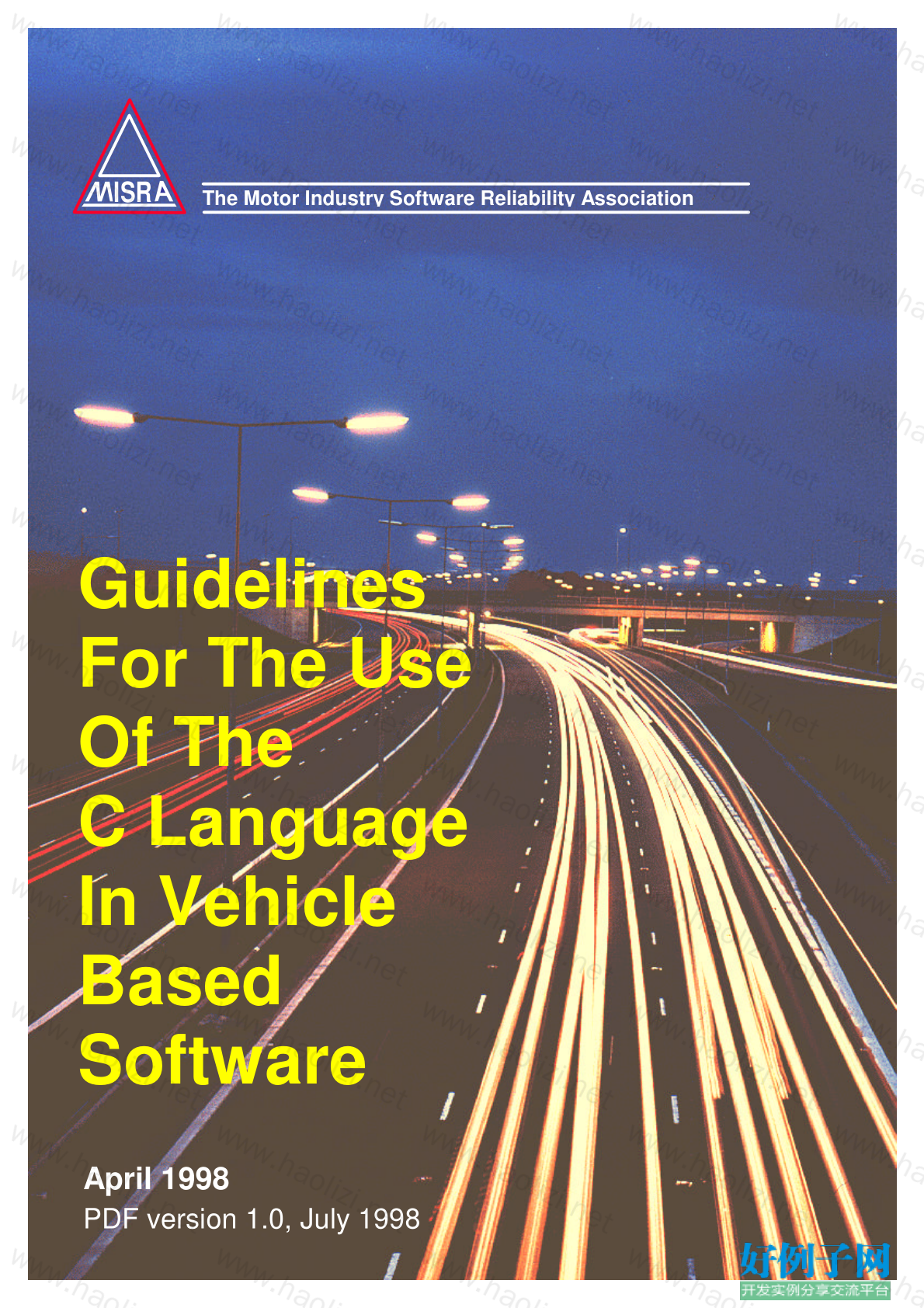
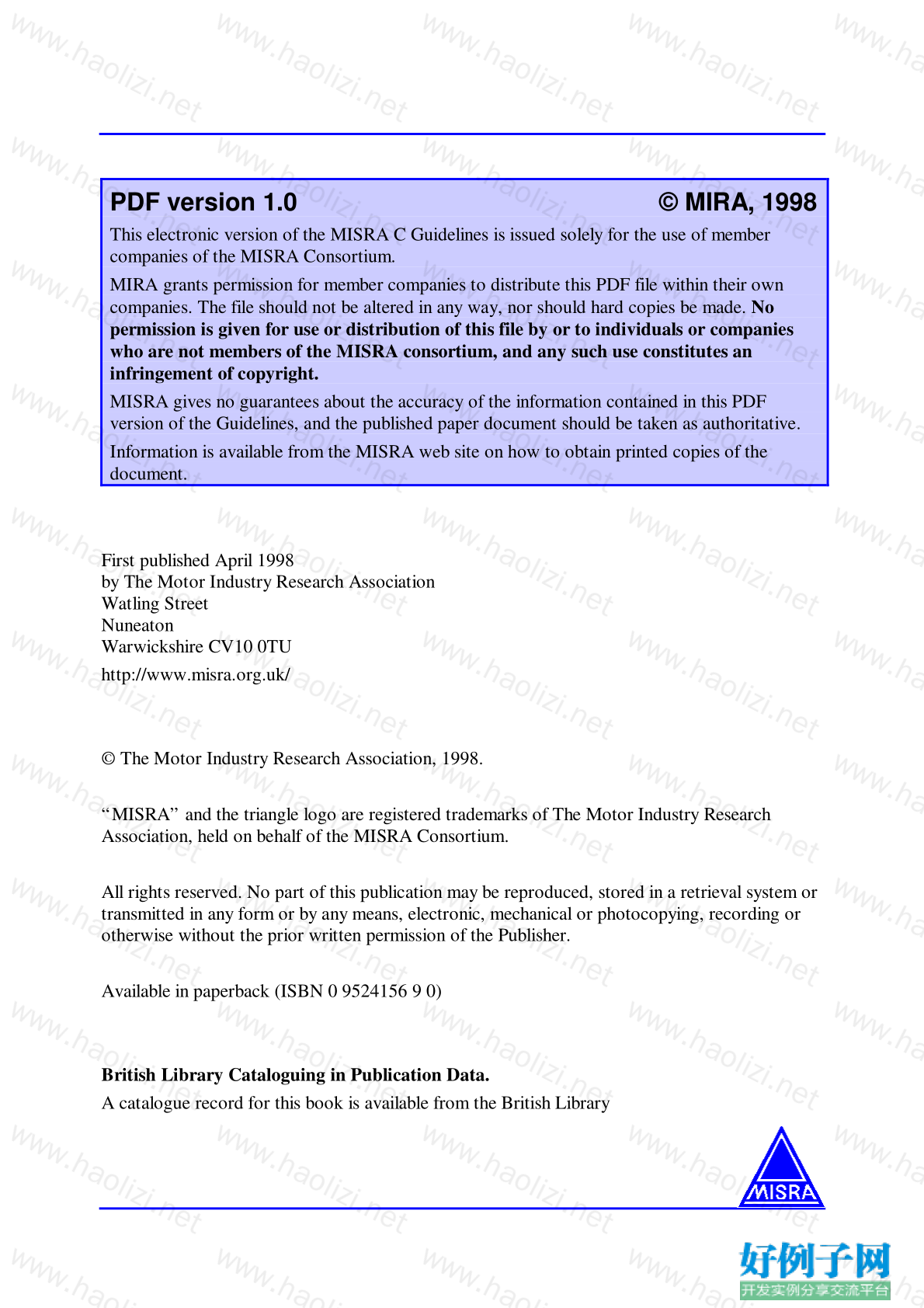
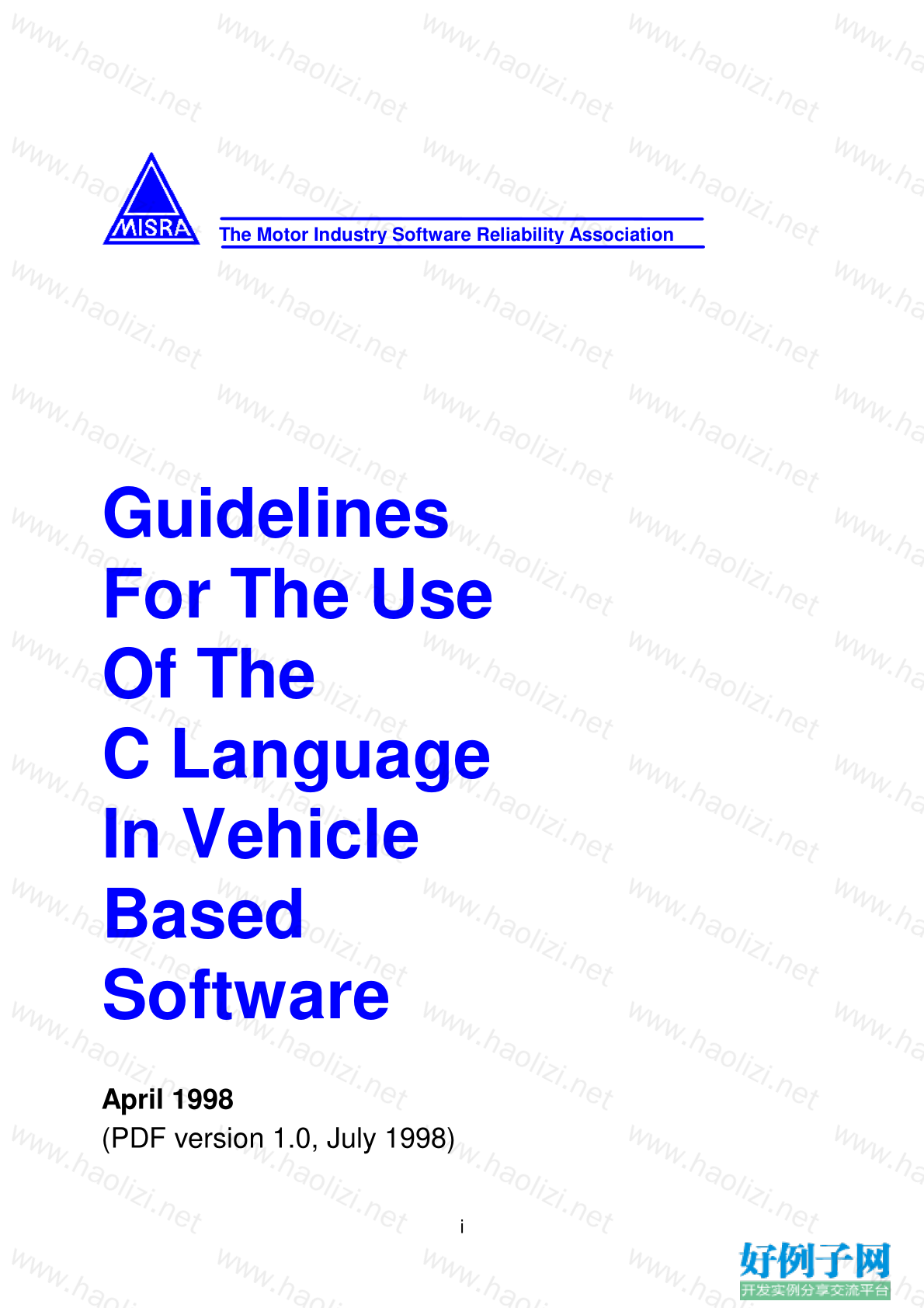
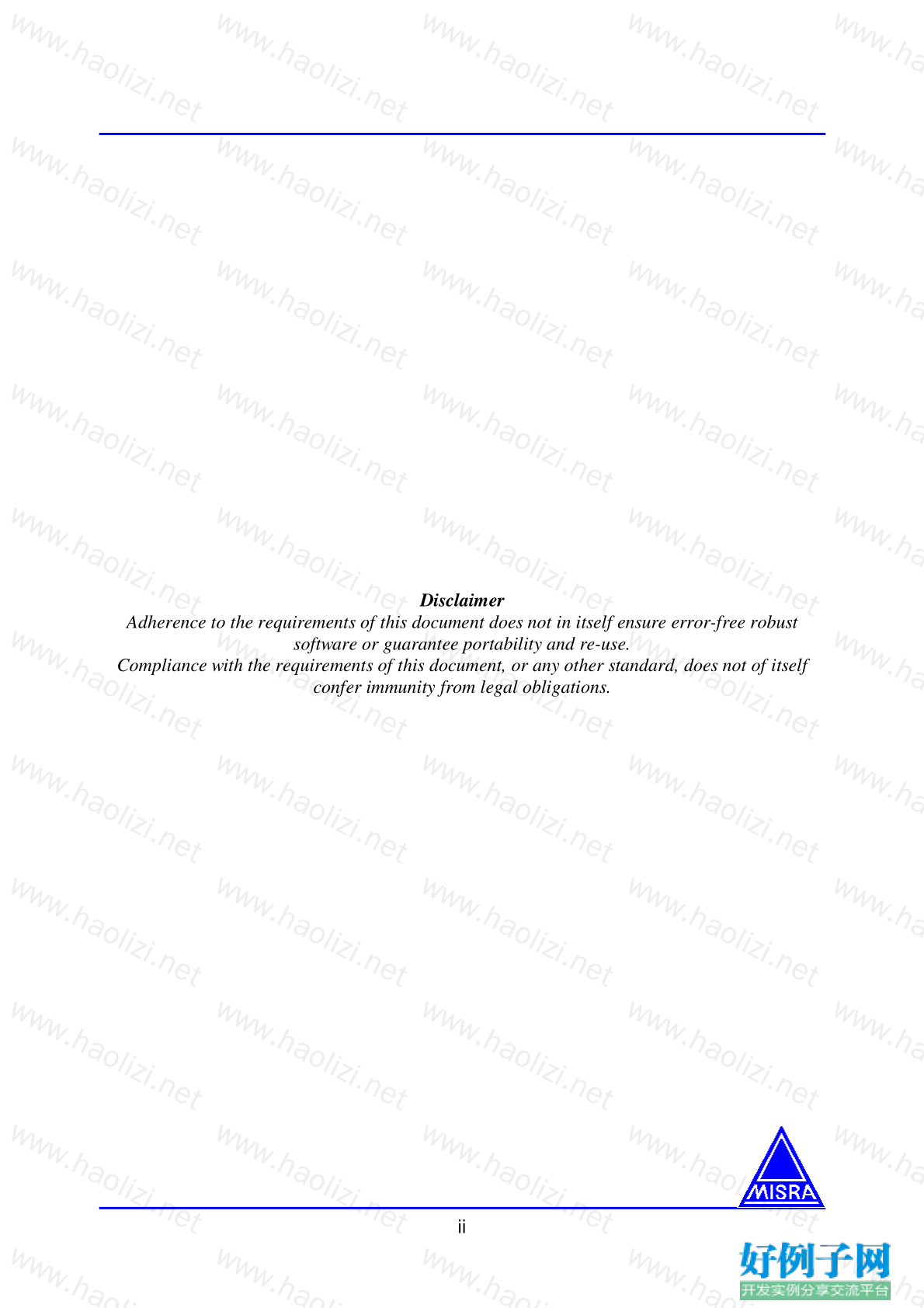
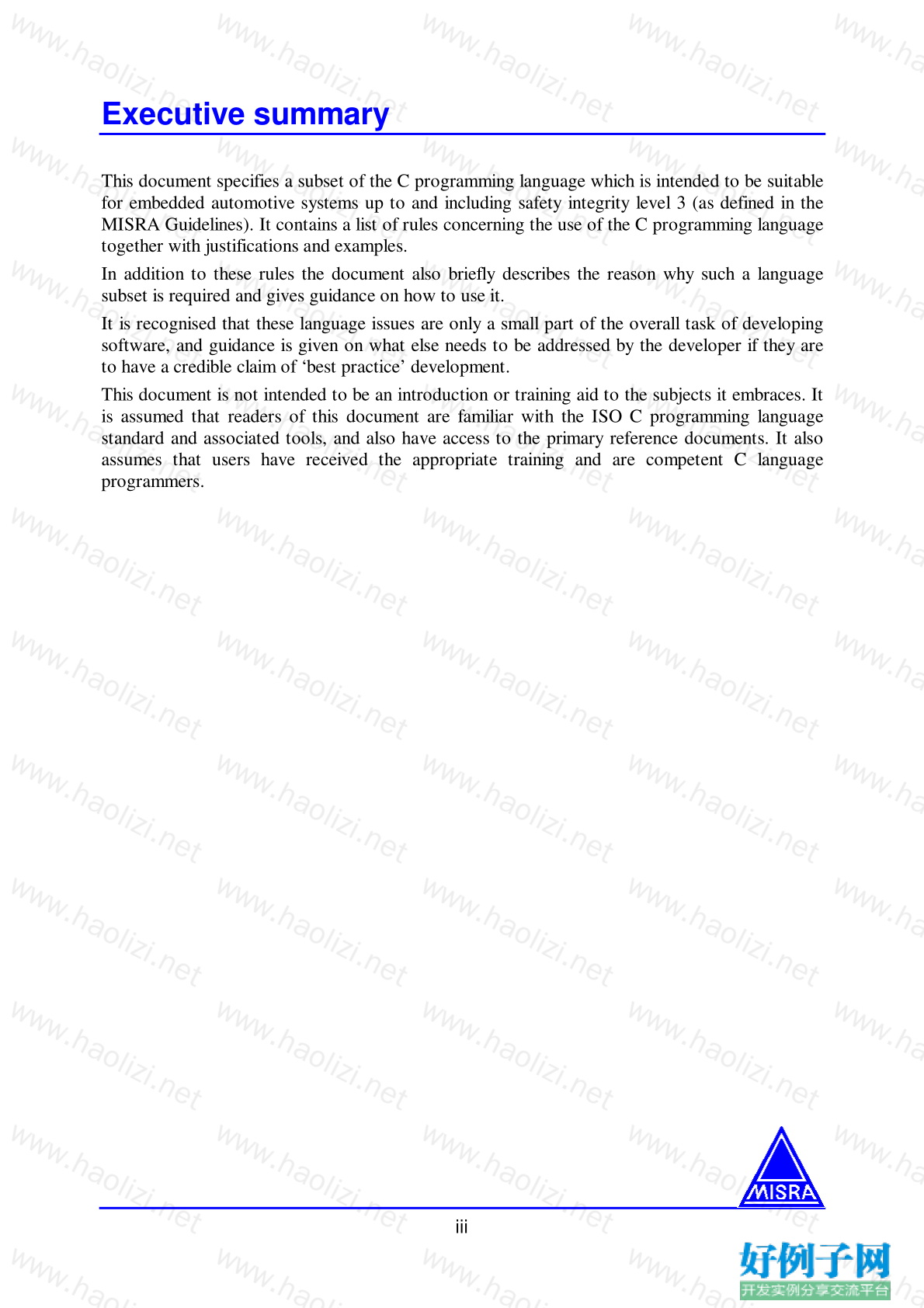
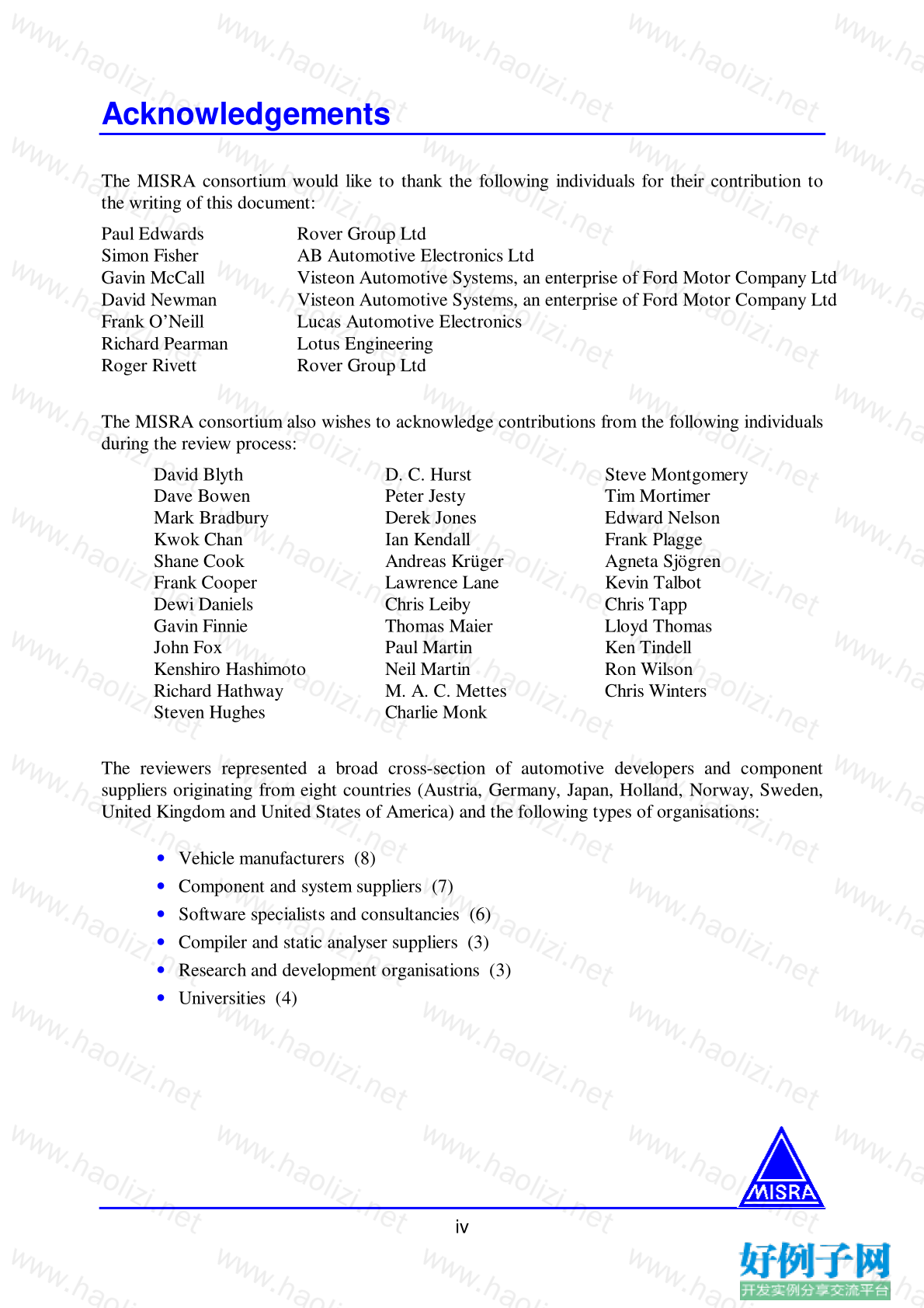
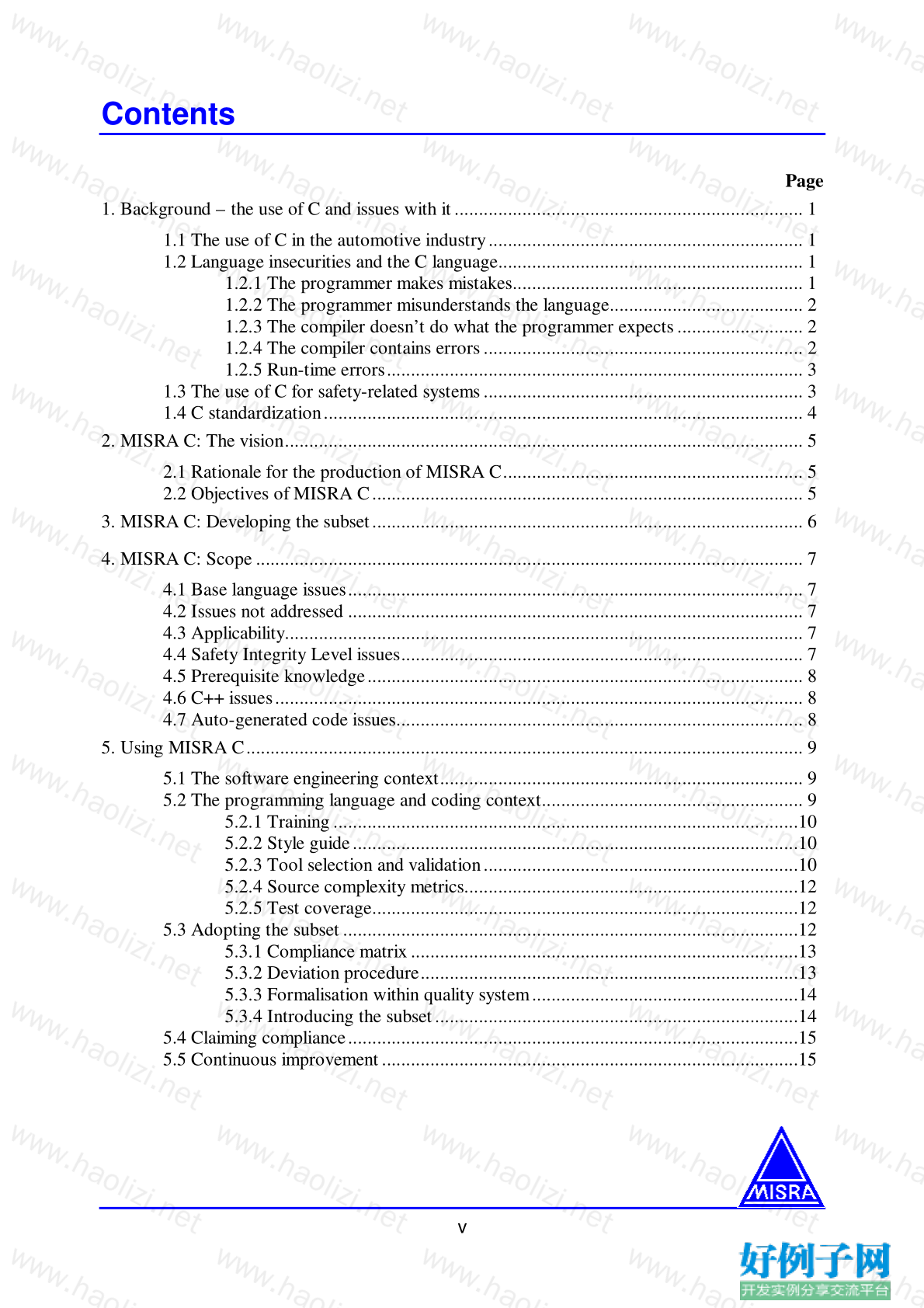
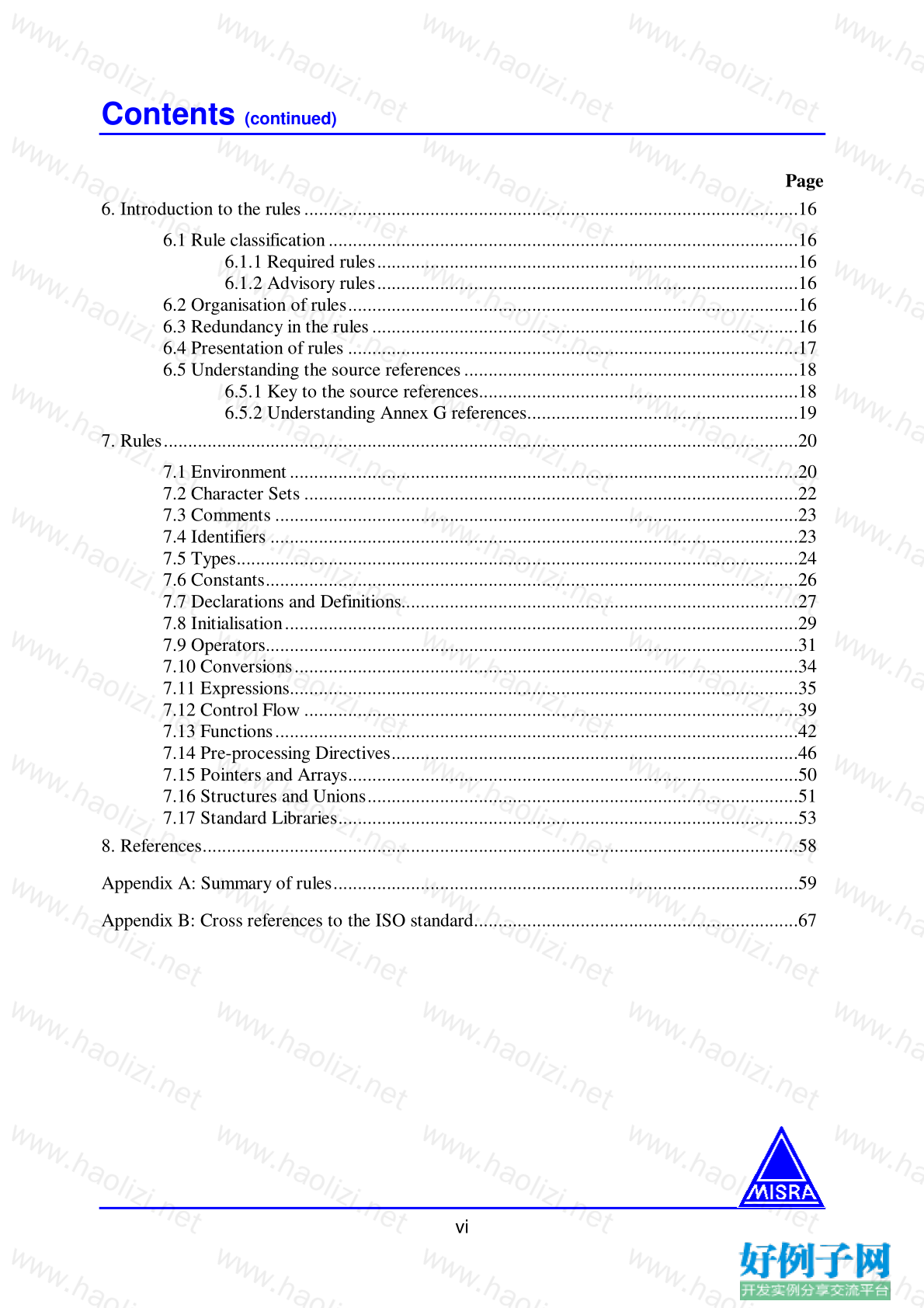
【核心代码】
Contents
Page
1. Background – the use of C and issues with it ........................................................................ 1
1.1 The use of C in the automotive industry ................................................................. 1
1.2 Language insecurities and the C language............................................................... 1
1.2.1 The programmer makes mistakes............................................................ 1
1.2.2 The programmer misunderstands the language........................................ 2
1.2.3 The compiler doesn’t do what the programmer expects.......................... 2
1.2.4 The compiler contains errors.................................................................. 2
1.2.5 Run-time errors...................................................................................... 3
1.3 The use of C for safety-related systems.................................................................. 3
1.4 C standardization ................................................................................................... 4
2. MISRA C: The vision........................................................................................................... 5
2.1 Rationale for the production of MISRA C.............................................................. 5
2.2 Objectives of MISRA C......................................................................................... 5
3. MISRA C: Developing the subset......................................................................................... 6
4. MISRA C: Scope ................................................................................................................. 7
4.1 Base language issues.............................................................................................. 7
4.2 Issues not addressed .............................................................................................. 7
4.3 Applicability........................................................................................................... 7
4.4 Safety Integrity Level issues................................................................................... 7
4.5 Prerequisite knowledge .......................................................................................... 8
4.6 C issues............................................................................................................. 8
4.7 Auto-generated code issues.................................................................................... 8
5. Using MISRA C................................................................................................................... 9
5.1 The software engineering context........................................................................... 9
5.2 The programming language and coding context...................................................... 9
5.2.1 Training ................................................................................................10
5.2.2 Style guide ............................................................................................10
5.2.3 Tool selection and validation .................................................................10
5.2.4 Source complexity metrics.....................................................................12
5.2.5 Test coverage........................................................................................12
5.3 Adopting the subset ..............................................................................................12
5.3.1 Compliance matrix ................................................................................13
5.3.2 Deviation procedure..............................................................................13
5.3.3 Formalisation within quality system .......................................................14
5.3.4 Introducing the subset...........................................................................14
5.4 Claiming compliance .............................................................................................15
5.5 Continuous improvement ......................................................................................15
vContents (continued)
Page
6. Introduction to the rules......................................................................................................16
6.1 Rule classification .................................................................................................16
6.1.1 Required rules.......................................................................................16
6.1.2 Advisory rules.......................................................................................16
6.2 Organisation of rules.............................................................................................16
6.3 Redundancy in the rules........................................................................................16
6.4 Presentation of rules .............................................................................................17
6.5 Understanding the source references.....................................................................18
6.5.1 Key to the source references..................................................................18
6.5.2 Understanding Annex G references........................................................19
7. Rules...................................................................................................................................20
7.1 Environment .........................................................................................................20
7.2 Character Sets ......................................................................................................22
7.3 Comments ............................................................................................................23
7.4 Identifiers .............................................................................................................23
7.5 Types....................................................................................................................24
7.6 Constants..............................................................................................................26
7.7 Declarations and Definitions..................................................................................27
7.8 Initialisation ..........................................................................................................29
7.9 Operators..............................................................................................................31
7.10 Conversions........................................................................................................34
7.11 Expressions.........................................................................................................35
7.12 Control Flow ......................................................................................................39
7.13 Functions............................................................................................................42
7.14 Pre-processing Directives....................................................................................46
7.15 Pointers and Arrays.............................................................................................50
7.16 Structures and Unions.........................................................................................51
7.17 Standard Libraries...............................................................................................53
8. References...........................................................................................................................58
Appendix A: Summary of rules................................................................................................59
Appendix B: Cross references to the ISO standard...................................................................67
好例子网口号:伸出你的我的手 — 分享!
小贴士
感谢您为本站写下的评论,您的评论对其它用户来说具有重要的参考价值,所以请认真填写。
- 类似“顶”、“沙发”之类没有营养的文字,对勤劳贡献的楼主来说是令人沮丧的反馈信息。
- 相信您也不想看到一排文字/表情墙,所以请不要反馈意义不大的重复字符,也请尽量不要纯表情的回复。
- 提问之前请再仔细看一遍楼主的说明,或许是您遗漏了。
- 请勿到处挖坑绊人、招贴广告。既占空间让人厌烦,又没人会搭理,于人于己都无利。
关于好例子网
本站旨在为广大IT学习爱好者提供一个非营利性互相学习交流分享平台。本站所有资源都可以被免费获取学习研究。本站资源来自网友分享,对搜索内容的合法性不具有预见性、识别性、控制性,仅供学习研究,请务必在下载后24小时内给予删除,不得用于其他任何用途,否则后果自负。基于互联网的特殊性,平台无法对用户传输的作品、信息、内容的权属或合法性、安全性、合规性、真实性、科学性、完整权、有效性等进行实质审查;无论平台是否已进行审查,用户均应自行承担因其传输的作品、信息、内容而可能或已经产生的侵权或权属纠纷等法律责任。本站所有资源不代表本站的观点或立场,基于网友分享,根据中国法律《信息网络传播权保护条例》第二十二与二十三条之规定,若资源存在侵权或相关问题请联系本站客服人员,点此联系我们。关于更多版权及免责申明参见 版权及免责申明



网友评论
我要评论